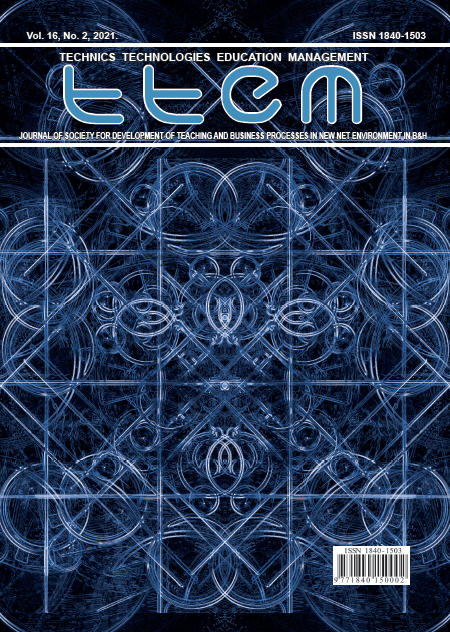Learning from the past about water and architecture: Case of Kampong Ayer, Brunei

Inanc Isil Yildirim1, Lana Kudumovic2
1 Faculty of Engineering and Architecture, Interior Architecture Department, Beykent University, Istanbul, Turkiye,
2 Faculty of Architecture and Design, Fatih Sultan Mehmet Vakif University, Istanbul, Turkiye.
Abstract
_________________________
Abstract Water is the most important source of life and livelihood for the continuity of life. Throughout history, in city planning, architecture and interior architecture, which form the shell of life, different solutions have been produced to meet the needs of people with water. While the changing needs of life add new meanings to live with water, we witness the changing borders between sea and land. Although habitats on water seem like an alternative due to extreme climate changes, actually living with water is not a new concept. However, with the number of extreme climatic events as a result of human activities and the changing of the planet’s climate, some issues and sensitivities have emerged in the evaluation of water. Not only extreme climate changes, but also increasing density, economic trends and sustainability issues have led to an increased focus on living with water. In this study, the example of Kampung Ayer in Brunei, which is one of the largest water neighbourhood that has survived to the present day and where life still continues, has been discussed and evaluated as a source that can provide inputs for the design of water cities, which are seen as an alternative among the cities of the future, by trying to understand their positive features and possible problems. In this context, considering historical process and population density, the features that can be considered as a water city with public functions such as education, health and transportation have been effective in the selection of the sample. The guiding and instructive features of these examples from the past, which will provide a sustainable and healthy collective life, to the floating architectural examples of the future are discussed. As a result, by learning from the historical water villages, findings and suggestions are included to be an input for future designs. The originality of this study is the use of water villages, which have many post-use experiences of life on water in history, as a learning tool in floating architectural designs.
Key Words: Living with Water, Floating Architecture, Traditional Floating Villages, Climate Change, Cultural Sustainability.
References
_________________________
1. Ahmad A. The constraints of tourism development for a cultural heritage destination: The case of Kampong Ayer (Water Village) in Brunei Darussalam, Tourism Management Perspectives, 2013; 8: 106–113.
2. Bosselmann PC, Kondolf GM, Jiang F, Geping B, Zhimin Z, Mingxin L. The Future of a Chinese Water Village. Alternative Design Practices Aimed to Provide New Life for Traditional Water Villages in the Pearl River Delta, Journal of Urban Design, 2010; 15(2): 243-267.
3. Duman II, Zengel R. Effects of physical design features to human comfort on floating spaces, Open House International,2016; 41(1): 93-100.
4. Gleick PH. Basic Water Requirements for Human Activities: Meeting Basic Needs, Water International, 1996; 21(2): 83-92.
5. Hosseini E, Mursib G, Nafida R, Shahedi B. Values in Traditional Architecture: Malay House, Conference: 6th International Seminar on Vernacular Settlements, Famagusta, North Cyprus, 2012.
6. Jones A. Urban conservation issues in Brunei Darussalam: the case of Brunei’s water villages, Planning Perspectives, 1997; 12(4): 457-475.
7. Liu Q, Liao Z, Wu Y, Degefu D M, Zhang Y. Cultural Sustainability and Vitality of Chinese Vernacular Architecture: A Pedigree for the Spatial Art of Traditional Villages in Jiangnan Region. Sustainability, 2019; No.11: 1-27.
8. Mail A. Live on Water: Lifestyle of Kampong Ayer Community during the British Residency Period, 1906-194, in book: Brunei: History, Islam, Society, and Contemporary Issues, Publisher: London: Routledge Editors: Ooi Keat Gin, 2016.
9. Nasir AH, Teh WHW. The Traditional Malay House. Singapore: Fajar Bakti, Shah Alam, Malaysia, 1997.
10. Nicholl R. Ed. ‘European Sources for the History of the Sultanate of Brunei in the Sixteenth Century.’ Brunei Museums Special Publication 1975; No.9.
11. Olajuyjugbe AE, Rotowa AE, Adewumi IJ. Water Vending in Nigeria. A Case Study of Festac Town, Lagos, Nigeria, Mediterranean Journal of Social Sciences, 2012; 3(1).
12. Piatek L. Displacing architecture? From floating houses to ocean habitats: expanding the building typology, in: Education for research – research for creativity / Słyk J., Bezerra L. (ed.), Architecture for the Society of Knowledge, Wydział Architektury Politechniki Warszawskiej, 2016; vol. 1.
13. Rapoport A. House Form and Culture London: Prentice – Hall, INC., Englewood Cliffs, N.J. 1969; vol.10.
14. Saunders G. A History of Brunei, Oxford University Press, New York, 1994.
15. Shaaban AS, Yildirim II. A Comparative Evaluation of Floating And Terrestrial Architecture; a Case Study of Google’s Floating Data Center and Googleplex Terrestrial Building. ISDLW-I I st International Design For Living With Water Symposium Proceeding Book, 2019; pp.15-24.
16. Stopp H, Strangfeld P. Floating houses – chances and problems, Eco-Architecture III, 2010; Vol. 128: 221-233.
17. Stopp H, Strangfeld P, Malakhova A. Floating Architecture and Structures; an Answer to the Global Changes, REAL CORP, 2016.
18. Vlatseas S. A History of Malaysian Architecture, Longman Singapore publisher Pte.Ltd., Singapore. 1990.
19. Yildirim II. Yatlarda İç Mekân Tasarimi ve Algisi (Yacht Interior Design and Perception) , YAPIENDÜSTRİ MERKEZİ YEM Publishing. 2017.
20. Yuan JL. The Malay House: Rediscovering Malaysia’s Indigenous Shelter System. Penang: Institut Masyarakat. 1988.
21. Zainol NRB, Mamun A A, Permarupan P Y. Overview of Malaysian Modularity Manufacturing Practices, American Journal of Industrial and Business Management, 2013; 3(7).
Corresponding Author
Inanc Isil Yildirim,
Faculty of Engineering and Architecture,
Interior Architecture Department,
Beykent University,
Istanbul,
Turkiye,
E-mail: inancisilyildirim@gmail.com
